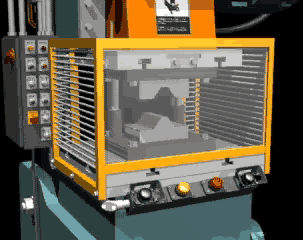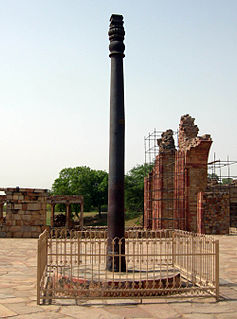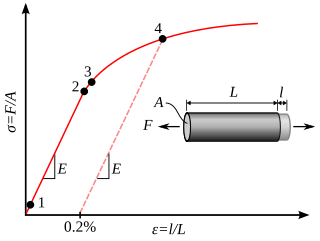
SIGGRAPH is the annual conference on computer graphics (CG) convened by the ACM SIGGRAPH organization. The first SIGGRAPH conference was in 1974. The conference is attended by tens of thousands of computer professionals. Past conferences have been held in Los Angeles, Dallas, New Orleans, Boston, Vancouver, and elsewhere in North America. SIGGRAPH Asia, a second yearly conference, has been held since 2008 in various Asian countries. The strength of SIGGRAPH comes from the chapters set all around the world.
The term computer-supported cooperative work (CSCW) was first coined by Irene Greif and Paul M. Cashman in 1984, at a workshop attended by individuals interested in using technology to support people in their work. At about this same time, in 1987 Dr. Charles Findley presented the concept of Collaborative Learning-Work. According to Carstensen and Schmidt, CSCW addresses "how collaborative activities and their coordination can be supported by means of computer systems". On the one hand, many authors consider that CSCW and groupware are synonyms. On the other hand, different authors claim that while groupware refers to real computer-based systems, CSCW focuses on the study of tools and techniques of groupware as well as their psychological, social, and organizational effects. The definition of Wilson (1991) expresses the difference between these two concepts:
CSCW [is] a generic term, which combines the understanding of the way people work in groups with the enabling technologies of computer networking, and associated hardware, software, services and techniques.

Hydroforming is a cost-effective way of shaping ductile metals such as aluminium, brass, low alloy steel, and stainless steel into lightweight, structurally stiff and strong pieces. One of the largest applications of hydroforming is the automotive industry, which makes use of the complex shapes made possible by hydroforming to produce stronger, lighter, and more rigid unibody structures for vehicles. This technique is particularly popular with the high-end sports car industry and is also frequently employed in the shaping of aluminium tubes for bicycle frames.

Stamping is the process of placing flat sheet metal in either blank or coil form into a stamping press where a tool and die surface forms the metal into a net shape. Stamping includes a variety of sheet-metal forming manufacturing processes, such as punching using a machine press or stamping press, blanking, embossing, bending, flanging, and coining. This could be a single stage operation where every stroke of the press produces the desired form on the sheet metal part, or could occur through a series of stages. The process is usually carried out on sheet metal, but can also be used on other materials, such as polystyrene. Progressive dies are commonly fed from a coil of steel, coil reel for unwinding of coil to a straightener to level the coil and then into a feeder which advances the material into the press and die at a predetermined feed length. Depending on part complexity, the number of stations in the die can be determined.
CSA was a division of Cambridge Information Group and provider of online databases, based in Bethesda, Maryland before merging with ProQuest of Ann Arbor, Michigan in 2007. CSA hosted databases of abstracts and developed taxonomic indexing of scholarly articles. These databases were hosted on the CSA Illumina platform and were available alongside add-on products like CSA Illustrata. The company produced numerous bibliographic databases in different fields of the arts and humanities, natural and social sciences, and technology. Thus, coverage included materials science, environmental sciences and pollution management, biological sciences, aquatic sciences and fisheries, biotechnology, engineering, computer science, sociology, linguistics, and other areas.

Computer Society of India is the first and largest body of computer professionals in India. It was started on 6 March 1965 by a few computer professionals and has now grown to be the national body representing computer professionals. It has 72 chapters across India, 511 student branches, and 100,000 members.

Deep drawing is a sheet metal forming process in which a sheet metal blank is radially drawn into a forming die by the mechanical action of a punch. It is thus a shape transformation process with material retention. The process is considered "deep" drawing when the depth of the drawn part exceeds its diameter. This is achieved by redrawing the part through a series of dies. The flange region experiences a radial drawing stress and a tangential compressive stress due to the material retention property. These compressive stresses result in flange wrinkles. Wrinkles can be prevented by using a blank holder, the function of which is to facilitate controlled material flow into the die radius.
Cold working or cold forming is any metalworking process in which metal is shaped below its recrystallization temperature, usually at the ambient temperature. Such processes are contrasted with hot working techniques like hot rolling, forging, welding, etc.
A specification often refers to a set of documented requirements to be satisfied by a material, design, product, or service. A specification is often a type of technical standard.

Shear forming, also referred as shear spinning, is similar to metal spinning. In shear spinning the area of the final piece is approximately equal to that of the flat sheet metal blank. The wall thickness is maintained by controlling the gap between the roller and the mandrel. In shear forming a reduction of the wall thickness occurs.

Rubber pad forming (RPF) is a metalworking process where sheet metal is pressed between a die and a rubber block, made of polyurethane. Under pressure, the rubber and sheet metal are driven into the die and conform to its shape, forming the part. The rubber pads can have a general purpose shape, like a membrane. Alternatively, they can be machined in the shape of die or punch.
A forming limit diagram, also known as a forming limit curve, is used in sheet metal forming for predicting forming behavior of sheet metal. The diagram attempts to provide a graphical description of material failure tests, such as a punched dome test.

Iron, steel, and ferrous metals constitute a large portion of collections in museums. The conservation and restoration of iron and steel objects is an activity dedicated to the preservation and protection of objects of historical and personal value made from iron or steel. When applied to cultural heritage this activity is generally undertaken by a conservator-restorer. Historically, objects made from iron or steel were created for religious, artistic, technical, military and domestic uses. Though it is generally not possible to completely halt deterioration of any object, the act of conservation and restoration strives to prevent and slow the deterioration of the object as well as protecting the object for future use. One of the first steps in caring for iron is to examine them and determine their state, determine if they are corroding, and consider options for treatment.

Reimund Neugebauer is a German mechanical engineer and professor who has been working in the field of machine tools and forming processes. On October 1, 2012, he took office as the tenth President of the Fraunhofer Society, the largest research organization in Europe, from his predecessor Hans-Jörg Bullinger.
Due to the plastic-elastic characteristic of a metal, it is typical that any deformation of sheet metal at room temperature will have both elastic and plastic deformation. After the metal work piece is removed from the tool or deformation implement, the elastic deformation will be released and only the plastic deformation will remain. When a metal forming tool is planned and designed to deform a work piece, the shape imparted by the tool will be a combination of elastic and plastic deformation. The release of the elastic deformation is the spring back often observed at the end of a metal forming process. The spring back has to be compensated to achieve an accurate result.

The Association of Chiropractic Colleges (ACC) is composed of accredited chiropractic educational programs in North America and affiliate member institutions worldwide. Its stated goal is to advance chiropractic education and research among its member institutions, which it achieves through a number of regularly scheduled conferences.
Today the metal forming industry is making increasing use of simulation to evaluate the performing of dies, processes and blanks prior to building try-out tooling. Finite element analysis (FEA) is the most common method of simulating sheet metal forming operations to determine whether a proposed design will produce parts free of defects such as fracture or wrinkling.

The Charleston Conference is an annual event for academic libraries and publishers, held in Charleston, South Carolina, in the United States.
















